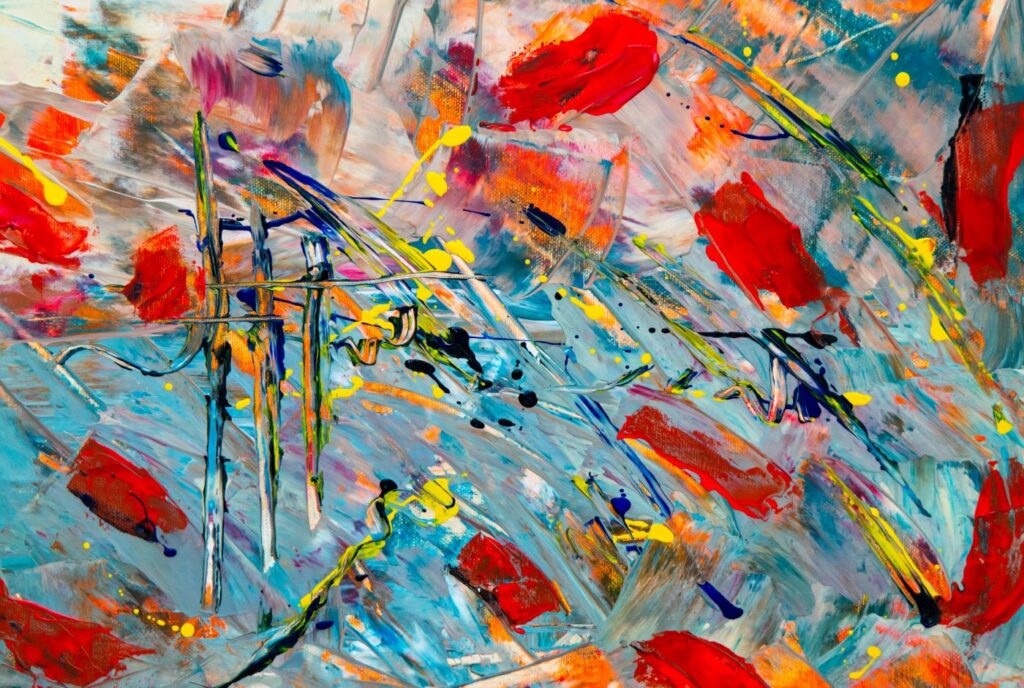Expressive Arts Therapy
Power of Art Therapy to Reduce Stress
In today’s fast-paced world, stress has become a common companion for many. From work pressures to personal responsibilities, stress can take a toll on our mental and physical well-being.
Fortunately, there is an artistic escape that offers a unique path to relaxation and healing – art therapy. Through the creative process of making art, individuals can tap into their emotions, express themselves, and find solace in the calming world of colors and textures. But how exactly does art therapy reduce stress?
What is Art Therapy?
Art therapy is a type of therapy that uses the creative process of making art to promote mental, emotional, and physical well-being. It provides a secure environment for people to express their thoughts, emotions, and experiences through a variety of art forms such as painting, drawing, sculpture, and collage. The art therapist serves as a guide, encouraging self-expression and assisting in the healing process.
Understanding Stress and Its Impact on Mental Health
Before we can discuss how therapeutic art relieves stress, we must first grasp what stress is and how it affects our mental health. Stress is a natural response to difficult or hazardous events that causes a sequence of physiological changes in our bodies. However, persistent stress can have negative consequences, including anxiety, sadness, and other mental health concerns.
Chronic stress can upset the balance of neurotransmitters in the brain, influencing mood, cognition, and overall well-being. It can also cause physical symptoms such as headaches, muscle tension, and sleep difficulties. Finding efficient coping skills is critical for combating stress’s detrimental consequences.

The Science Behind Art Therapy and Stress Reduction
Art triggers the brain’s reward system, which releases dopamine, a chemical associated with pleasure and motivation. When we produce art, our brains reach a state of flow, in which we are completely immersed in the present moment. This state of flow encourages relaxation and shifts our focus away from stressors, allowing us to feel calm and content.
Art therapy also promotes the release of endorphins, the brain’s natural pain relievers and mood boosters. These molecules help to relieve stress and create a good attitude. Art therapy has been demonstrated in studies to reduce cortisol levels, the stress hormone, hence lessening the physiological symptoms associated with stress.
Benefits of Art Therapy in Reducing Stress
Art therapy has numerous benefits for stress reduction. One of the primary benefits is its capacity to boost self-esteem. Art allows people to tap into their inner creativity and express themselves without fear of being judged. This process promotes a sense of success and self-worth, which boosts confidence and reduces stress.
Art therapy also develops self-awareness by encouraging people to express their feelings and thoughts via the art-making process. Individuals acquire insight into their own emotions and a better understanding of themselves by visually depicting their inner experiences. This self-awareness can help people recognize and address the root causes of stress, resulting in better emotional well-being.
Furthermore, therapeutic art offers a constructive way to express feelings. Sometimes words alone are insufficient to communicate complex emotions or experiences. Art provides a nonverbal mode of communication, allowing people to express and process their emotions in a safe and creative setting. This form of emotional expression can be therapeutic, relieving tension and emotional strain.

How Art Therapy Promotes Self-Expression and Emotional Release
Individuals can express themselves freely without being constrained by language or society conventions using therapeutic art techniques such as free drawing, painting, and collage. Individuals can express their deepest ideas and emotions through the process of creating, allowing pent-up feelings to be released.
The art therapist fosters a friendly and nonjudgmental environment in which clients can explore their feelings at their own pace. This therapeutic interaction builds trust and enables people to delve deeper into their emotions, resulting in increased emotional release and stress reduction.
Different Art Therapy Techniques for Stress Reduction
Art therapy provides a diverse set of techniques that may be adjusted to individual requirements and tastes. Some regularly used techniques are:
- Mandala Drawing: Creating mandalas, intricate geometric designs, can be a meditative practice that promotes relaxation and stress reduction.
- Journaling with Art: Combining writing with art allows individuals to express their thoughts and feelings in a more holistic manner, providing a comprehensive outlet for emotional release.
- Sculpting: Working with clay or other sculpting materials allows individuals to physically mold and shape their emotions, providing a tactile means of expression and stress reduction.
- Group Art Therapy: Engaging in therapeutic art within a group setting can foster a sense of community and support, enhancing the therapeutic benefits of art-making.

Incorporating Art Therapy into a Self-Care Routine
Art therapy can be incorporated into a self-care regimen to reduce stress and improve general well-being. Taking time for creative hobbies, such as drawing, painting, or coloring, can provide a welcome respite from daily worries. Creating art can be a form of mindfulness, in which people focus on the present moment and engage in a relaxing activity.
Furthermore, trying out new creative materials and techniques can provide diversity and excitement to one’s self-care regimen. Trying new art forms can ignite creativity and provide new channels for self-expression, resulting in increased stress reduction and personal growth.
Case Studies and Success Stories of Art Therapy for Stress Reduction
Numerous case studies and success stories demonstrate art therapy’s usefulness in relieving stress. For example, a study of cancer patients in treatment discovered that art therapy greatly lowered stress and increased quality of life. Similarly, art therapy has been demonstrated to help people with post-traumatic stress disorder (PTSD) by offering a safe avenue for processing painful experiences and alleviating symptoms.
These success stories highlight the effectiveness of art therapy as a supplemental method to standard therapy for stress management and overall well-being.

Finding an Art Therapist or Art Therapy Resources Near You
If you want to try art therapy, you need find a trained art therapist who can help you through the process. Art therapists are skilled specialists who understand the therapeutic value of art-making. They can help you deal with your stress and provide the essential support and guidance.
To discover an art therapist near you, look in professional directories like the American Art Therapy Association’s website or ask for referrals from mental health experts. Those who prefer remote solutions can also take advantage of internet resources and virtual art therapy sessions.
Conclusion
Finally, therapeutic art provides a unique and effective method to stress reduction and mental well-being. Individuals can express themselves, connect with their emotions, and find peace in the calming world of colors and textures by producing art. The science of therapeutic art demonstrates its potential to trigger the brain’s reward system, produce endorphins, and promote calm.
Art therapy has a variety of psychological advantages, including improved self-esteem, increased self-awareness, and a healthy outlet for emotions. Individuals who incorporate therapeutic art into their self-care routines can actively manage stress and attain emotional equilibrium.
So, whether or not you consider yourself an artist, therapeutic art may be a transforming tool for relieving stress and finding peace in the turmoil of daily life. Accept the therapeutic potential of therapeutic art and embark on a path of self-discovery and emotional well-being.
Trusted Health, Wellness, and Medical advice for your well-being



